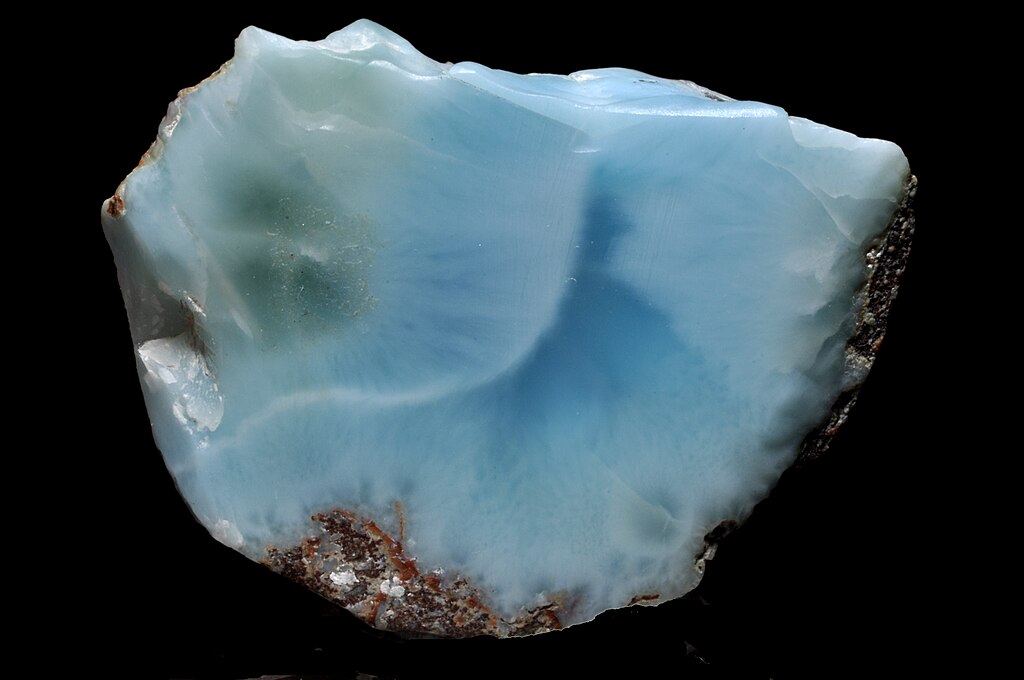Larimar
Normally a humble white silicate mineral that usually forms in a ball shape or a spray of crystals, pectolite becomes something very special when you add a little copper to it. In fact, the only time you might hear about pectolite (and you wouldn’t know it) is when it’s called “larimar.” Larimar is a beautiful ocean-blue and white gemstone that’s only found in the Dominican Republic. It got its name and became famous when two friends—an American and a Dominican—found it on a beach there, named it “larimar” after the local guy’s daughter and the Spanish word for “sea,” and realized it could be a valuable gemstone. Local people had found it before, thought it was pretty, and originally thought it came from the ocean because of its color, but they didn’t think “Hey, we could make money selling this!” That part happened when an American helped to “discover” it. The way larimar forms is similar to how agates form. Minerals carried in hot water are deposited in empty spaces in volcanic rock and build up into deposits of larimar, sometimes even forming geodes. The minerals include calcium, sodium, and silicon, with a dash of copper to create larimar’s distinctive color.
| Formula | Group or Type | Shape | Hardness | Specific Gravity | Streak | Luster |
|---|---|---|---|---|---|---|
| NaCa2Si3O8(OH) | — | Triclinic | 6–6.5 | 2.6–2.8 | White | Vitreous to pearly |
